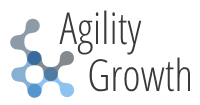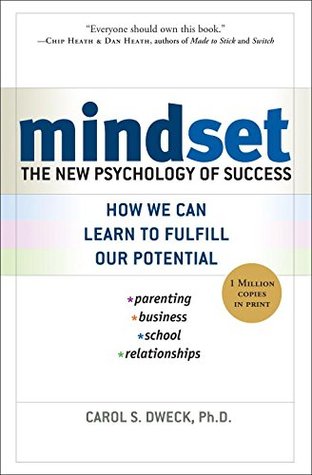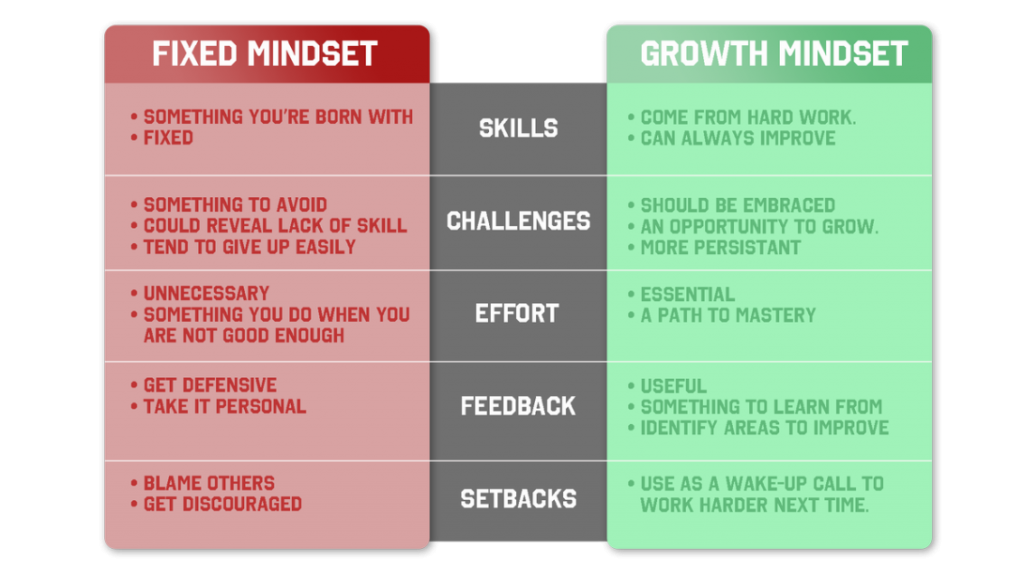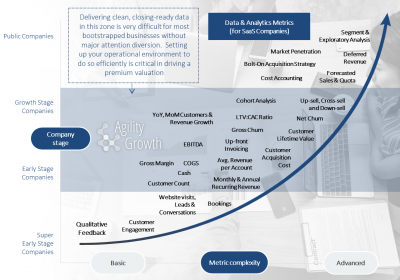Credibility and Premium Valuations for Bootstrappers III, SaaS Data & Analytics Definitions
A number of years ago, I joined ranks with the now millions of teachers, parents, students, and business professionals who have benefited from reading and internalizing Stanford psychology professor Carol Dweck’s best-selling book “Mindset: The New Psychology of Success.” While the research behind her theories took decades to compile and her book has been in print since 2006, the concepts she pioneered in the book have experienced compounding influence in education, parenting, and business over the last handful of years, recently seeing a hockey-stick expansion in reach.
While I won’t get into a full review of the book here (there are hundreds, if not thousands, of very thorough reviews from reputable sources available by now), it is worth covering a few global takeaways as I build to the point of this post, which is that the best bootstrapped businesses and their founders tend to show what Dweck would likely call an exceptionally strong “Growth Mindset.” In fact, in all of my firm’s most successful transactions, the business’ ability to exhibit a rare level of growth orientation at the most critical moments was paramount in creating exceptional outcomes for the company and its employees. In many cases, past clients have leaned on an expanding growth mindset to catapult them to even more success post-deal.
In Mindset, Dweck delivers a blow to IQ bias and illuminates why hard work and continuous improvement are more important than innate traits like static intelligence and “God-given talent.” She accomplishes this by describing two primary mindsets from her research: Fixed Mindset and Growth Mindset.
Characteristics of a Fixed Mindset
- Connected to a conviction that attributes are carved in stone.
- Generates urgency to prove oneself (or Company, as the case may be) each and every day because output is the “evidence” that you are good enough (since attributes are static).
- Where a fixed mindset prevails, “failure” on a task leads an individual to doubt his or her own talent and intelligence, and can quickly extend to damaging views like “I am and always will be a failure,” “I’m stupid,” or “my company won’t ever be successful.”
- “Leads to a desire to look smart and therefore a tendency to (1) avoid challenges, (2) get defensive or give up easily, (3) see effort as fruitless or worse, (4) ignore useful negative feedback, and (5) feel threatened by the success of others. As a result, fixed mindset individuals / companies may plateau early and achieve less than their full potential.”
Characteristics of a Growth Mindset
- Connected to a conviction that attributes are things you can develop and enhance through dedicated effort, focus, and persistence.
- With growth mindset, one’s baseline talents / incapacity as well as relative strengths / weaknesses represent a starting point for learning and development.
- Where a growth mindset prevails, “failure” illuminates areas for improvement and is seen as an opportunity to embrace, not as a demerit worthy of shame or disappointment.
- Although individuals and businesses may greatly differ in their foundational talents, aptitudes, interests, and temperaments, growth mindset presents the exciting and liberating truth that everyone (and every company) can change and grow through determination, effort, and resilience.
- “Leads to a desire to learn and therefore a tendency to (1) embrace challenges, (2) persist in the face of setbacks, (3) see effort as the path to mastery, (4) learn from criticism, and (5) find lessons and inspiration in the success of others. As a result, individuals / companies with a growth mindset typically reach higher levels of achievement than those with a fixed mindset..”
As I have discussed in previous posts, bootstrappers are unique. The combination of risk tolerance, belief, vision, and work ethic it takes to build a sustainable business without a safety net is the stuff of bonfire tales and Ted talks (though often never publicized because bootstrappers have too much to do!). It can also lead to tremendous Growth Mindset in some areas and, at times, blind spots or even a Fixed Mindset in other areas. As Dweck underscores, a key distinction related to mindset is true for each of us and for all businesses: you can have a growth mindset in some areas and a fixed mindset in others. The key to unlocking the greatest future “upside” lies in identifying where you might be “fixed” (or stuck) and then applying a growth mindset in your efforts to shift that orientation.
For example, many of my clients own/operate product-first businesses where the foundation for the company’s success has come in the form of a tremendous capacity for identifying product-market fit and then continuously applying a growth mindset to the problem of incremental product improvement. This product-driven growth mindset has often persisted until the success of an exceptional product pushed the business toward the “first world problem” of needing to focus attention elsewhere (e.g.. hiring, training, sales, etc.) in order to continue to scale the business. Unfortunately, these necessary shifts in attention can lead to gradual deviations in mindset that can slow progress. In many cases, this malaise can persist until a concerted effort is made to redouble the commitment to operating with a growth mindset. One unfortunate reality of bootstrapping is that time and resources are limited, whereas areas for investment feel almost infinite; a resource / constraint gap such as this can often lead a strong shift in focus toward growth in one area to trigger related atrophy (and sometimes almost protectionist fixing of mindset) elsewhere. I will get into numerous examples from past clients in future posts and videos, but for now will close in noting some areas where I have seen deliberate shifts toward a growth mindset make all the difference for self-funded, owner-operated enterprises. I’ll start by describing a few common areas where self-funded enterprises tend to need a growth mindset to unlock their highest potential and will then list others that will also be covered in detail in future posts (I am already well past my self-imposed 1,000 word limit!).
- Customer voice and product: one of the many reasons bootstrapped business tend to have such great products driving their success lies in the many hats that founders wear, especially in the early days. These founders often begin their journeys as CEO, CTO, EVP of Product, VP of Sales, Head of Customer Success, and Chief Bottle Washer all in one. While this intersection can create stress, sleepless nights, and a feeling of never quite excelling in any single area, the product often thrives in such an environment. This is because it creates nearly instantaneous feedback loops that drive product innovation and an almost organic connection between product and customer. Herein, the founder knows exactly what features customers are looking for because she is often writing the customer success tickets, knows just how to implement the feedback quickly because she does the programming and design, and then knows how to bring the improvements back to the customer because she is also the head of sales. It is a challenging but often beautiful and elegant organizational design due to its efficiency and seamless connection between each of executive, product, and sales execution. However, when the business does well enough for long enough, things change. New team members enter many of the functional roles, typically making it much harder to find that same continuous growth orientation and seamless feedback loops connecting customer, product, sales, and leadership. Additionally, new competitors will enter the market and product and sales execution will become more difficult at scale, necessitating a fundamental shift back to customer voice / understanding and implementation within the organization.
- Technical debt: even in the early days, many successful bootstrapped companies find themselves in a reactive state where they build out their feature sets, teams, and infrastructure as customer requirements necessitate vs. in a highly strategic manner. One common outcome in such settings is a product that currently serves customers very well and often has a top-of-market or near top-of-market feature / module set. However, many of these companies find that during reactionary build-out of the excellent features, the price paid was technical debt where the platform was built on top of database, server, and backend development structures that are not up-to-date / modern, not built with current industry best practices in mind, and not factored to scale as customer bases grow, true enterprise-level customers emerge, and platform requirements demand the technical debt be paid back. Bootstrapped businesses with a growth mindset eventually recognize the development debt incurred, retrofit / rebuild to fix, and restructure their development processes to prevent future technical debt from being incurred. New processes will include addressing platform work to maintain a market-leading feature set and usability as well as backend development that ensures platform scalability moving forward. Again, I will dedicate a full post to this and other components of the tech bootstrapper’s growth mindset in the future.
In addition to the areas described above, similar dynamics often emerge within bootstrapped businesses in the following areas:
- Sales and marketing, including pricing optimization
- Customer success
- Accounting and finance
- Legal and corporate organization
- Data analysis, customer segmentation, churn reduction, and related KPI engagement / optimization
- HR, especially pertaining to senior management augmentation and middle management additions
- Systems and tools used (HR, Accounting, Sales, Marketing, Analytics tools)
As I mentioned earlier, I’ll dig into these areas in the future. From past feedback and experience, I know each represents room for improvement and value-expansion for many bootstrappers, so I’ll also try to include related commentary from past clients and previous successful transactions in future growth-mindset-oriented posts. Finally, I will probably start adding some videos with answers to many of the questions that friends, colleagues, and readers have sent as DMs to my previous posts. Let me know what you’d most like to discuss from this post (you can reach me at mike@agilitygrowth.com) or with other questions you’d like me to write about, and … as always, I love connecting with like-minded finance folks, entrepreneurs, and other humans. Feel free to connect with me on LinkedIn and / or Twitter if you’re so inclined.





